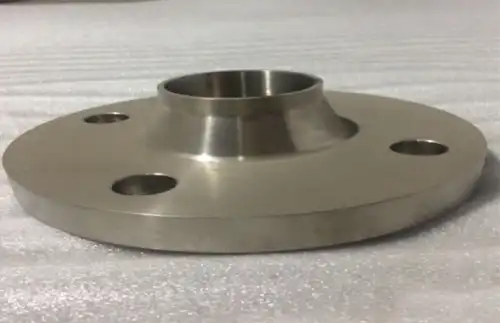Titanium castings, due to their high strength, lightweight, and excellent corrosion resistance, are widely used in high-end applications such as aerospace, shipbuilding, automotive, and medical devices. After casting, titanium castings undergo a series of rigorous post-processing steps to fully realize their performance potential and meet stringent user requirements. The following are key steps for proper post-processing of titanium castings:

1. Removing the Oxide Film on the Casting Surface
Titanium easily forms an oxide film in the air, which affects subsequent processing. Common removal methods include:
Mechanical Deoxidation: Grinding or polishing with tools such as grinding wheels and sandpaper to remove the surface oxide layer.
Chemical Deoxidation: Dissolving and removing the oxide film with acidic solutions such as nitric acid, hydrochloric acid, and sulfuric acid.
2. Heat Treatment to Optimize Microstructure and Properties
Heat treatment is a key process for improving the mechanical properties and microstructure of titanium castings:
Aging: Maintaining the temperature at a specific temperature promotes the formation of a stable structure within the crystals, thereby increasing the material's strength and hardness.
Annealing: After heating, the cooling rate is controlled to form uniform, fine grains, significantly improving the material's toughness and plasticity.
Normalizing: After heating and holding, the material is air-cooled to room temperature to optimize the material's hardness and strength by adjusting the crystal structure.
3. Precision Machining
Machining is required to achieve precise dimensional and shape requirements:
Machining methods include milling, turning, drilling, reaming, and grinding.
Critical Controls: Strictly selecting the appropriate cutting speed, depth of cut, and cooling method to ensure machining quality and dimensional accuracy, while avoiding machining difficulties caused by titanium's high strength and high activity.
4. Surface Treatment: Improving Quality and Corrosion Resistance
Surface treatment aims to improve appearance and enhance protection:
Polishing: Mechanically or chemically removes burrs and roughness to create a smooth surface.
Sandblasting: Using high-pressure gas to spray sand particles to clean the surface, create a uniform texture, and remove residual oxide layers.
Anodizing: Applying electricity in an acidic electrolyte creates a dense oxide film on the surface, significantly improving corrosion resistance and surface hardness.
5. Strict Quality Inspection to Ensure Compliance
After post-processing is completed, a comprehensive quality inspection is required:
Inspection Items: Includes visual inspection, dimensional accuracy measurement, mechanical property testing (such as strength and elongation), and chemical composition analysis.
Purpose: Ensures that the casting fully meets design specifications and usage requirements.
6. Standardized Storage and Transportation to Prevent Damage
To prevent re-oxidation or damage to treated castings, the following precautions should be taken during storage and transportation:
Environmental Requirements: Maintain a dry environment.
Protective Measures: Avoid direct contact with other materials, collisions, and severe vibration.
Conclusion
The systematic and rigorous execution of the above post-processing steps is crucial to ensuring that titanium castings achieve excellent mechanical properties, ideal surface conditions, and a long service life. These steps are closely linked and together determine the quality and reliability of the final titanium casting, ensuring it meets the stringent requirements of high-end applications.











